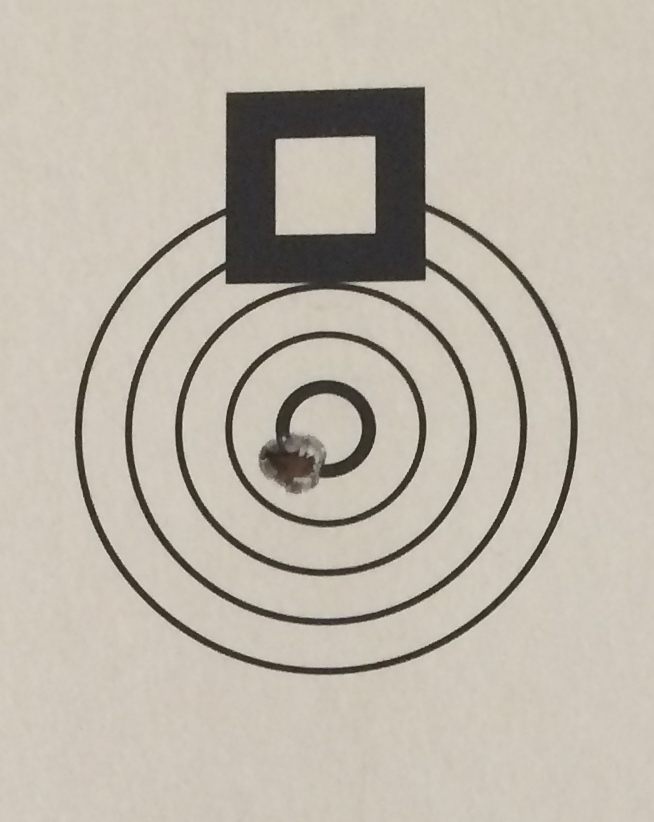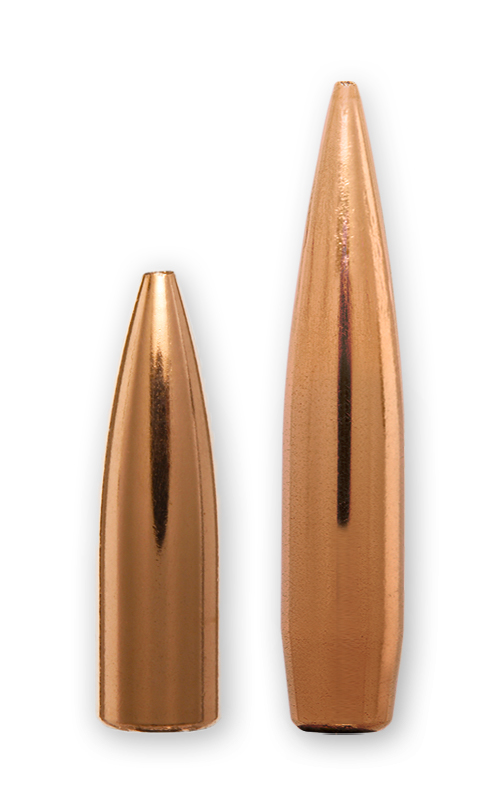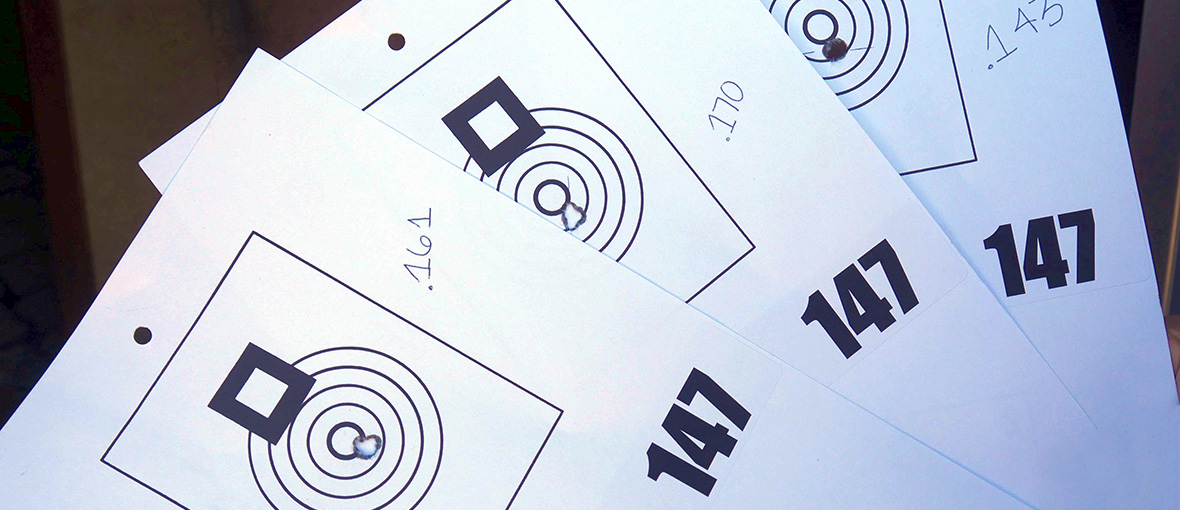Precision refers to the size of your shot group: smaller groups mean more precision. Most shooting applications require a combination of both accuracy and precision, but some events like bench rest are completely scored by precision.
How does Ballistic Coefficient relate to precision? The following two articles explore this question for both short and long range shooting.
BC Effect on Precision at Short Range
Remember that Ballistic Coefficient (BC) describes the ability of the bullet to penetrate the air, and retain velocity. This property is directly related to all ballistic performance measures like wind drift and drop. When talking about minimizing group size (improving precision), BC can do this by minimizing the effect of environmental variables, wind being the greatest one. However, at short range (100-300 yards) the effects of environmental uncertainties are not overwhelming.

To be competitive in short range bench rest shooting, you need to consistently shoot groups that measure 0.25″ or lower, with the top shooters getting groups sizes like Walt’s 0.105″ group pictured here!
At short range, and especially with the use of wind flags, the wind uncertainty can be managed to a degree that other things matter more than ballistic performance. At short range, it’s not so much about overcoming environmental uncertainty (wind) as it is raw mechanical potential for precision. One of the main drivers of this mechanical precision potential is the twist rate. Any imperfection in the bullet jacket, balance and alignment will be exacerbated into dispersion to an extent proportional to twist rate. In other words, the faster the twist rate, the larger the potential group size. This principle is what’s driven bench rest shooters to slower twist rates. Naturally, slower twist rates can’t stabilize high BC bullets. As a result, bench rest shooters select shorter, lighter often flat based bullets which are stable in the slow twist barrels they use for maximizing mechanical precision. Of course such bullets have low BC’s, but that’s OK because the advantage of maximizing mechanical precision with slower twist rates more than offsets the lower BC’s bullets when it comes to maximizing precision at short range.
Competitive bench rest shooters require the most consistent and concentric bullet jackets to minimize dispersion at 100-300 yards, which is why they trust our J4 Precision Jackets more than any other bullet jacket on the market.
One common misunderstanding surrounding this topic is that a boat-tail doesn’t provide any benefit out to 300 yards. This statement has some relevance but is not technically correct or complete. In fact, a boat-tail reduces base drag, and improves BC at all ranges. A better way to express the notion would be: Higher BC bullets, including heavier bullets with boat tails, and long noses, improve ballistic performance at all ranges, however, the ballistic performance benefit at short range is usually not as beneficial to precision as the mechanical advantage of using the lower BC bullets that can be stabilized with a slower twist rate.
In the next article, we’ll explore the effect of BC on precision at long range. The contrast is an important one for shooters to make well informed decisions about bullet selection based on their application.
BC Effect on Precision at Long Range
We’ve established that Ballistic Coefficient (BC) is a bullets ability to penetrate the air and retain velocity. This is what determines all ballistic performance measures including wind drift, and drop. So, how exactly can a higher BC bullet improve precision at long range?
At long range, the environmental effects (specifically wind) play a major role in precision. As the wind changes thru your string of fire, the horizontal dispersion of your group depends a great deal on how sensitive your bullet is to wind and that is governed a great deal by the BC.
We established in the above article that maximizing precision at short range required that you minimize the mechanical dispersion by using the slowest twist rate possible, and this drives bullet selection to the shorter, lighter, often flat based bullets. The resulting low BC is not a big problem at short range where the wind isn’t as big of a deal. However at long range, it’s quite the opposite. That’s why we see precision contests like bench rest gravitate toward higher BC bullets for long range shooting. The value of BC increases as the effects of the wind grow more dominant at longer distances.

The 6mm BR Column and 6mm 109gr Long Range Hybrid Target.
Both designed around specific purposes and distances.
If you were to compare a bench rest rifle set up for shooting the best groups at 100 yards, you’re probably looking at a 6mm 64-68 grain flat based bullet in a 1:14” twist or similar. The years have converged on that set up for that application, and at 100 yards it will usually beat a bench rest rifle set up for long range. Meanwhile, in 1000 yard bench rest you would be looking at higher twist rate barrels paired with heavier, longer, and higher BC bullets, like the 6mm 109gr Long Range Hybrid Target. The distinction in the optimal equipment being specific to the application is common. Look at top fuel dragsters which are optimized for ¼ mile times vs. a NASCAR style race car that races for many miles.
When selecting a bullet for a precision shooting application, it’s important to understand the effect of BC on precision depending on the range.
It’s also important to consider the nature of the environmental conditions on any given day. If you’re shooting in very stable conditions where the air is still, there may be no advantage to shooting high BC bullets in a long range precision contest because there’s no variable wind uncertainty to overcome. On calm days like these, those shooters set up with flat based bullets and slow twist rifles will not be at a disadvantage and perhaps even be favored. However when the wind is up at long range, those shooters set up with higher BC bullets will be able to shoot smaller groups because of how the performance of the bullet absorbs the wind uncertainty better.
In summary, a bullet’s balance, jacket concentricity, and tight in-lot consistency will impact precision more at shorter ranges than a bullet’s BC, but a bullet’s BC and BC consistency will have a higher impact on precision at longer ranges and when there are more variables related to environmental uncertainty (wind) to overcome.
Want a bullet that has both a high BC and a consistent BC? Learn more about our new Long Range Hybrid Target bullets.
